Water Management
Twenty five years in water conservation taught me a simple rule in reducing irrigation water usage.
Efficiency – metering – monitoring = savings
Efficiency
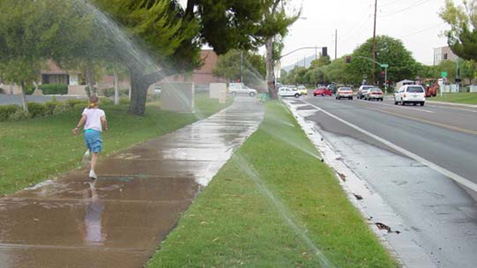
Make a run for it because there are several ways to waste water and poor design is one of them. Photo RBond
Its time to revisit the old standard of wall to wall turf, consider reductions in turf configurations not to include watering side walks for example. Appropriate size turf areas can still offer cooling effects and not use excessive amounts of water. Several layers of technology are also available to help maximize turf irrigation practices. Wi fi based programing utilize real time weather data, high efficiency nozzles minimize drifting and evaporation and sensors alert and shut down damaged systems.
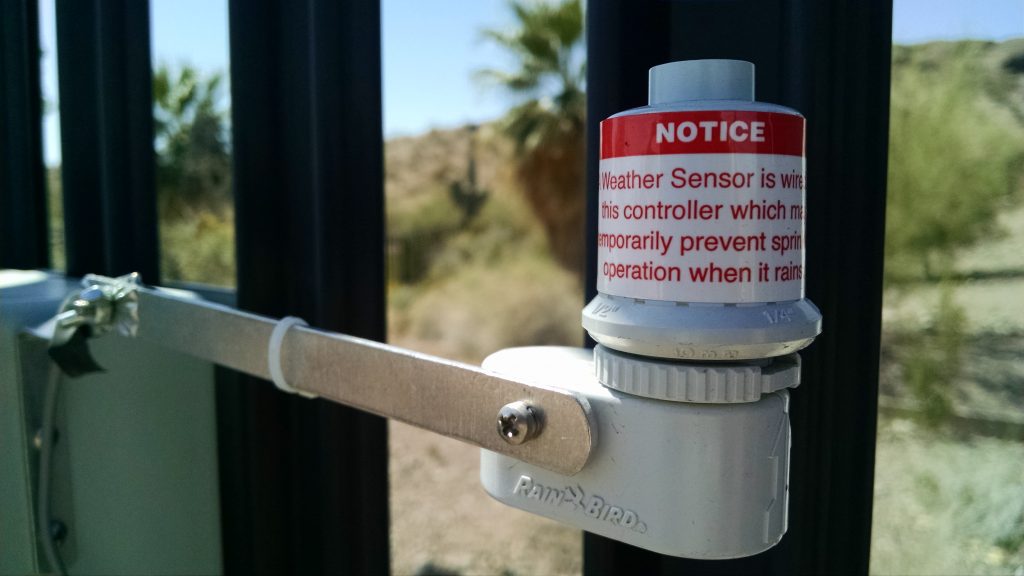
Rain Bird rain sensor shuts down a conventional controller when not on site.
Metering

Drip irrigation meter on a large drip irrigation system. Photo RBond
Know your water usage, take interest in how much water your using at any given time of the year. Look for water trends in summer water usage, overseeding, winter usage. New automated meter reading technology in some cities allow real time access to your usage. Most cities like Phoenix offer on line historical water usage data that can help establish base lines for usage. Know your system and what station or zone is using what at any given time. Its important to know all the parameters of your entire system. All the zones and station numbers.
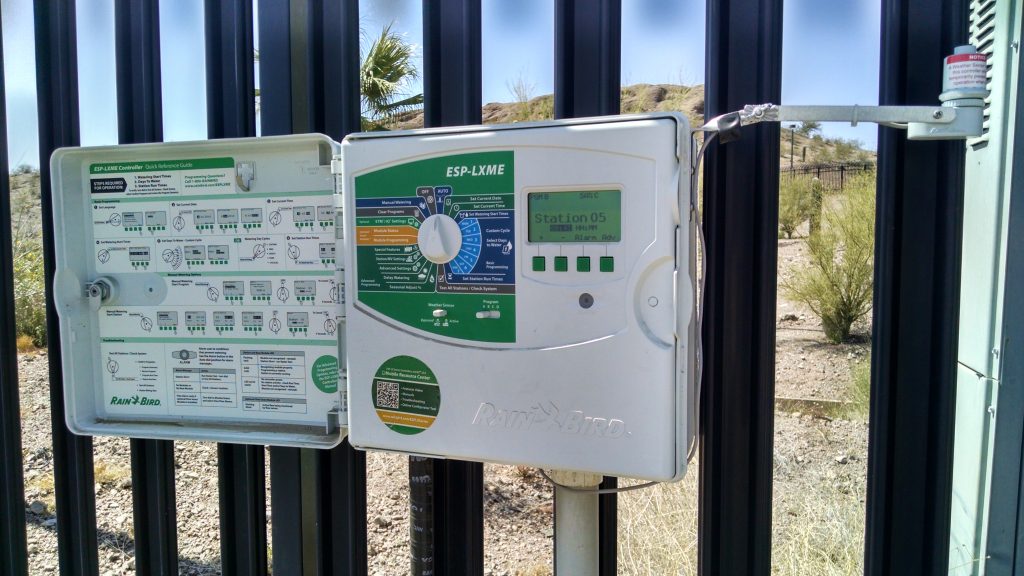
Drip irrigation controller with wi fi capability to interface with weather stations.
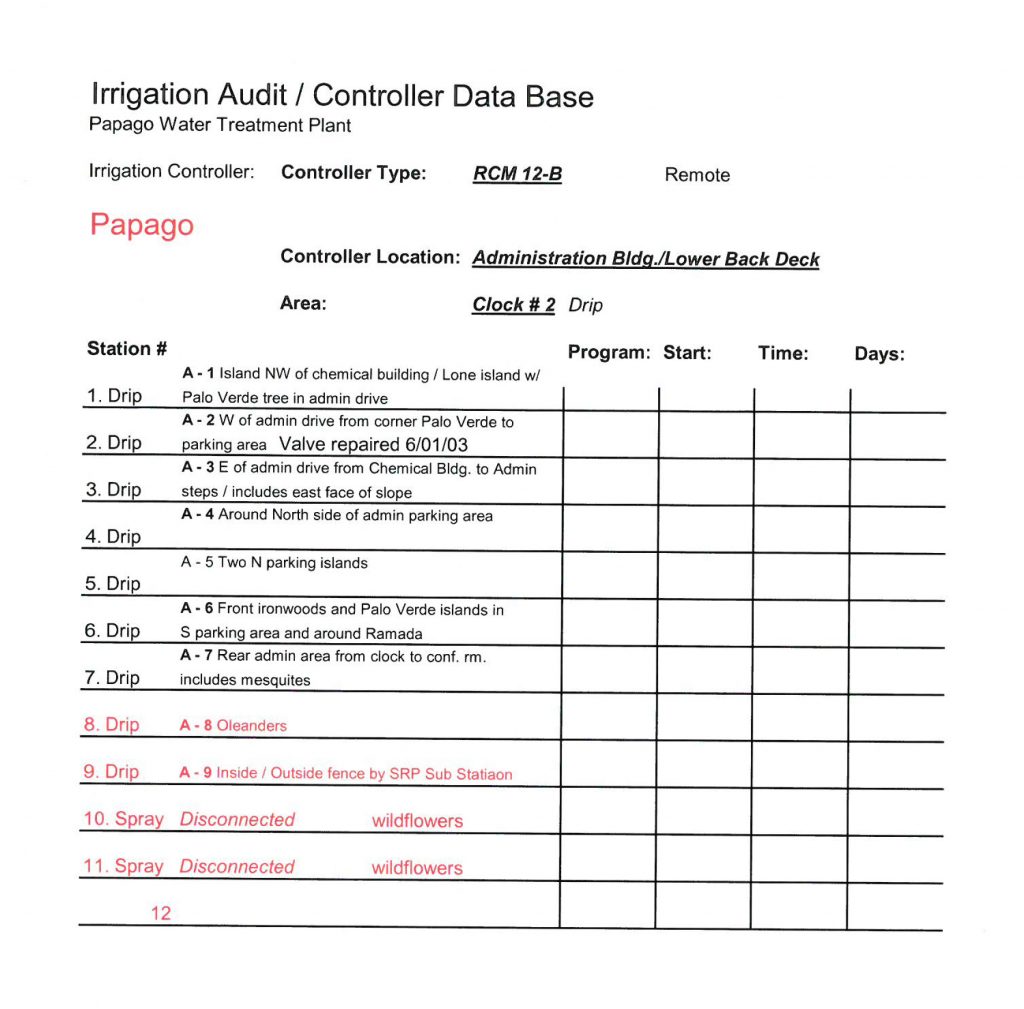
Example of a controller worksheet and inventory.
Monitoring:
Once irrigation systems are audited and up dated make comparisons from month to month, year to year to demonstrate performance. A simple data base can track performance for any given period. Set goals and track water usage. Identify stations or zones in need of additional adjustments. The key to water savings is good accounting. Know your flow and your usage.
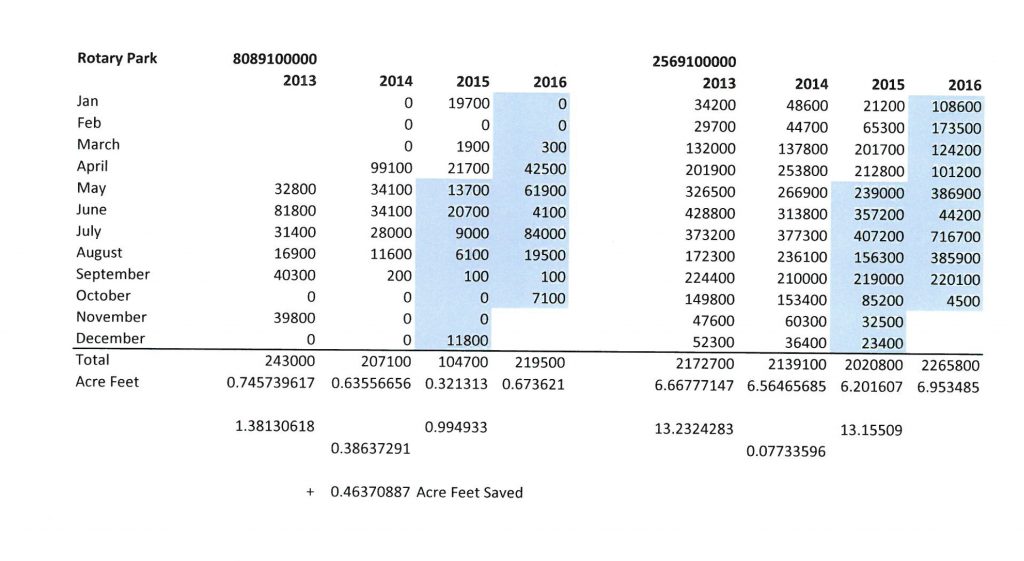
Example of a basic spread sheet comparing two valves usage over a two year period (2015-2016). Shown above is the savings shown by both meters totaled (.46 AF or 151,097 gal saved).
